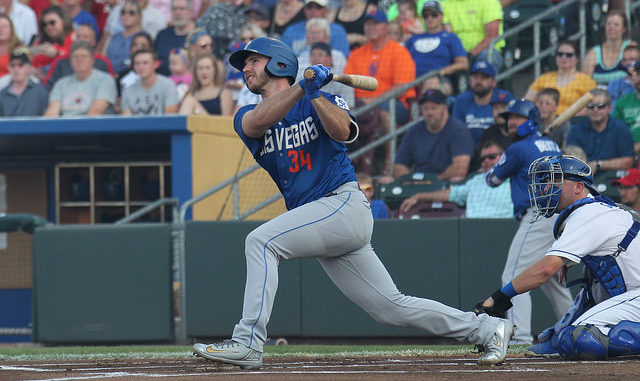
The Mets farm system looks markedly different at the outset of the 2019 season in my January Mets Top 50 Prospects than it did during my Midseason 2018 Top 50 list. In the win-now push by Mets ownership, prospects such as Jarred Kelenic, Justin Dunn, Luis Santana, Scott Manea, and a host of others have given way to veteran talent to help the big league club. In any franchise, ownership and the scouting department have to determine which prospects are meant to stay and develop, or be traded to help the current MLB roster. Such is the nature of prospecting: where movement–within and between organizations—is inherent to life in the minor leagues.
February is a time to have some fun, dream big, and take stock as the Mets season–with the first snaps of the mitt and cracks of the bat—is in its infancy in Port St. Lucie. Here are 10 predictions for some 2019 Mets prospects.
1. Pete Alonso will break camp and be in the Mets Opening Day lineup.
In what has to be the most significant prospect storyline for the Mets right now, Alonso’s Opening Day roster decision is a real litmus test to see how serious Brodie Van Wagenen’s proclamation to the fanbase is to put the best team on the field. Alonso, hitting in the middle of the order and manning first base from Game 1, is an upgrade over Todd Frazier and J.D. Davis. While Alonso might not put up the mighty triple slash that he did in 2018, a six month starting gig as a rookie could safely yield in the upper 20’s in HR, providing plenty of value in the process.
2. Mark Vientos will be a consensus Top 50 Overall prospect by midseason.
Vientos has been a darling of the prospect community as the calendar has turned to February, appearing in the 70-100 range of many Top 100 lists. Vientos comes into 2019 ranked as the organization’s number 3 prospect ahead of the high ceiling infield tandem of Ronny Mauricio and Shervyen Newton. Coming off a 2018 campaign where he doubled his BB rate and significantly turned up his fly ball profile, the power is trending up with these adjustments to match the impressive hit tool. I labeled Vientos as the heir apparent to David Wright, which is not to be taken lightly. Vientos’ impressive production at such a young age suggests that it’s only a matter of time before he gets the bump in the overall prospect ranking across the game.
3. Desmond Lindsay will make big strides in 2019 and be the Mets top outfield prospect by season’s end.
Lindsay flashed the athletic upside at the plate against the stiffer competition in the Arizona Fall League that made him look like the 2nd round talent that he was drafted for back in 2015. In what will be his age 22 season coming up, Lindsay may benefit from another long run in High A St. Lucie, where he played 84 G in 2018 and slashed .218/.310/.320. The mechanical adjustments with a more upright stance and pronounced hand load tapped into more explosive power in the AFL. With the outfield pool relatively shallow in the Mets organization, and Adrian Hernandez having yet to play stateside after a solid season in the DSL, Lindsay has the gifts to take the torch as the Mets top outfield prospect by the end of the season.
4. The minor league catching depth will be kept down for another season.
One area where the Mets are deep in the minor leagues is at the catcher position. Top ranked catching prospect Ali Sanchez, and closer-to-the-majors options Tomas Nido and Patrick Mazeika, will have further time to develop with the stable of veteran options in the major leagues. Big acquisition Wilson Ramos, incumbent Travis d’Arnaud, and the re-signed Devin Mesoraco, represent a backstop trio fit for a contender. It was really the February 7th re-signing of Mesoraco on a minor league deal that pushed Nido down the depth chart. The 21-year-old Sanchez impressed on the defensive side in the AFL, and will have ample time to develop the bat. Nido and Mazeika, both at 24-years-old, may be called into action should the need arise given the injury history of the big league catchers. Though on paper in February they find themselves looking up at a more crowded situation at the top.
5. Pitchers Junior Santos and Cesar Loaiza will gain industry-wide attention this season.
Santos is just starting to gain some helium as he cracked another major publication’s top 30 list in January during the onslaught of offseason prospect movement. Santos is a favorite of mine dating back to the midseason edition: he is a mammoth 6’8″ hurler from Santiago, Dominican Republic. He made his stateside debut at just 16-years-old, and dazzled with both his control and strikeout appeal. He represents a precocious pitcher with sizable upside. Loaiza is not quite as well known yet, but he should be given his projectable frame and potential to stick as a lefty in the rotation. The Venezuelan left hander can miss plenty of bats and can generate above average ground ball rates.
6. Prospect-eligible offseason acquisitions Walker Lockett and Sam Haggerty will impact the pennant race.
Lockett pitched solidly in San Diego before being shipped to Queens, by way of Cleveland, during the winter. Though it’s been a whirlwind of an offseason for Lockett, he has the profile to be a viable multi inning arm. His three pitch mix, with a 92-93 MPH fastball, could play up and generate important outs through the season in a variety of roles. As the Astros, Dodgers, and Red Sox have demonstrated the past few years, having a deep bevy of rotation arms behooves a team for a deep playoff run.
In the case of Sam Haggerty, his position versatility, on-base acumen, and speed may prove useful as the Mets push towards the postseason. The Mets struck gold last year with utility man Jeff McNeil, and Haggerty may be the next storybook minor leaguer for the franchise.
7. J.D. Davis will play in over 81 big league games in 2019.
Coming into 2018, J.D. Davis was making noise in Astros camp and secured the 3B job on Opening Day. A year later, he finds himself in a Mets uniform in a logjam at the hot corner. Though no longer prospect eligible, it was only a season ago where he carried a Top 100 prospect tag with him. This is why it cost the Mets so richly in prospect talent to acquire him, along with Cody Bohanek, for Luis Santana, Scott Manea, and Ross Adolph. Davis will be in the mix with Todd Frazier and Adeiny Hechavarria to break camp backing up Jed Lowrie. Davis has served as an emergency pitcher, and has a loud spring to his name, to help boost his chances. And with questions surrounding Lowrie’s health early in camp, Davis could seize the opportunity at a roster spot, and has the versatility and power bat to stick with the big league club.
8. At least one member of the pitching depth in the high minors will make the playoff roster.
Of course, the Mets have to make the playoffs for this to come to fruition. Like the catching position, the Mets boast plenty of middle relief type arms in the high minors. The top of this list is Eric Hanhold, who missed tons of bats during a well-traveled 2018 season that saw him play across five levels, including the MLB. His heavy sinker/slider combination bodes well for him to get big outs on the big stage. Steve Villines is another option to contribute meaningfully for the Mets. The side winding right hander has closing experience and has been particularly tough on lefties throughout his first two professional seasons. [Obligatory former Indians player alert, more on that later] Ryder Ryan, acquired for Jay Bruce in 2017, has been an excellent contributor out of the pen and could ascend to the majors in 2019 with continued momentum on his strikeout arsenal.
9. Rule 5 selection Kyle Dowdy will be a valuable multiple innings reliever in 2019.
The Mets brass were really excited to nab Dowdy away from the Indians with the 10th pick of the MLB portion of the Rule 5 Draft (as a side note, the overwhelming theme here is that the Indians and Mets have lined up significantly over recent memory on the player acquisition front). Van Wagenen proclaimed they believe Dowdy to have “tremendous upside,” and can contribute to the rotation depth and bullpen. Dowdy surrendered quite a bit of contact last year, yielding 134 H in 124 IP, but was able to limit free passes with 50 BB on the season. Dowdy, like Seth Lugo, may prove to be a difference maker as a swing man on the pitching staff. And as a Rule 5 selection, Dowdy has a little extra security to stick in Queens, or have be returned to Cleveland.
10. More minor league depth will be dealt.
The Mets have committed to a postseason push, and have already been plenty busy heading into 2019. New needs will emerge as the season grinds on, and the race gets tight in the middle of summer. Looking up and down January’s Top 50, the front office could deal from a variety of places depending on the type of talent they are eyeing. For a significant trade, it would pain Mets fans to lose any of the bright young infielders from the top, or any of the high draft pick lefty starters. The Mets don’t have very many outfielders to deal from, but do have substantial depth in the catching and relief corps. Who the Mets pick 11th overall during the June draft may be telling what area of talent they may deal from come trade deadline time. An all-in stance means more prospects will be traded, and more trade analysis from yours truly throughout the summer.
Ben is an Assistant Editor and also covers the Red Sox and Dynasty/Fantasy baseball content for Prospects1500. He also runs the #2EarlyMiLBMock, an annual prospect-only mock draft, for the Prospects1500 website. Ben is an experienced fantasy baseball player and is a deep league dynasty specialist. He has also contributed at FantraxHQ, RotoFanatic, and retired blogs Real McCoy Minors and Notes from the Sally. Follow Ben on Twitter @TBDubbs11.

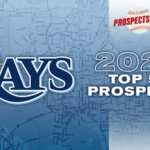
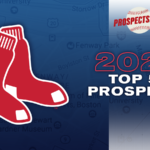
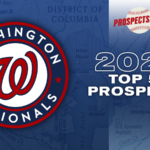
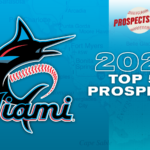
Leave a Reply